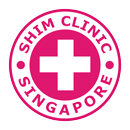Post-exposure prophylaxis (PEP) remains a cornerstone in HIV prevention. However, recent advancements and evolving guidelines are reshaping how we understand and utilize PEP in the fight against HIV. This article explores the latest innovations, real-life applications, and how PEP integrates with other prevention strategies.
Latest Advances in HIV PEP
Improved Medications
Newer antiretroviral drugs are more effective and have fewer side effects. Medications like integrase inhibitors are becoming preferred options due to their rapid action and higher tolerability. A study published in the Journal of Infectious Diseases highlights the efficacy of these newer medications in reducing side effects and improving patient adherence.
Shorter Treatment Durations
Research is ongoing into reducing the standard 28-day regimen without compromising efficacy. Early studies suggest that shorter courses may be effective in certain cases, though more data is needed. According to a report by the CDC, ongoing trials are investigating the potential of a 14-day PEP course with promising preliminary results.
PEP in Special Populations
New guidelines and research focus on optimizing PEP for different populations, including pregnant women, children, and those with comorbid conditions. Recent studies emphasize tailored approaches to improve safety and efficacy across diverse groups.
Adherence-Enhancing Strategies
Innovations in adherence strategies include digital health tools such as mobile apps for reminders, adherence counseling, and support groups. These tools are designed to help patients complete their PEP regimen effectively.
Real-World Effectiveness
Studies on real-world applications of PEP show high success rates in preventing HIV when started promptly and taken as prescribed. Case studies and data from global health organizations confirm the critical role of timely PEP in emergency situations.
Real-Life Applications
Case Studies
Recent case studies highlight the importance of timely PEP administration. For instance, a healthcare worker exposed to HIV-positive blood successfully avoided infection by starting PEP within hours of exposure. Such stories underscore the critical time window for starting treatment. A detailed case study can be found in the Lancet HIV.
Integrating PEP with Broader Prevention Strategies
Combination with PrEP
Pre-exposure prophylaxis (PrEP) is increasingly used alongside PEP for those at ongoing risk of HIV. Understanding when to transition from PEP to PrEP is crucial for continuous protection. The World Health Organization provides guidelines on integrating PrEP with PEP for comprehensive prevention.
Comprehensive Sexual Health
Regular STD testing and safe sex practices complement PEP. A holistic approach ensures comprehensive protection and early detection of any infections. The American Sexual Health Association emphasizes the importance of routine testing and prevention.
Access and Guidelines
Updated Guidelines
The CDC and WHO provide updated PEP guidelines, emphasizing the need for immediate action post-exposure and adherence to the prescribed regimen.
Availability in Singapore
In Singapore, PEP is accessible through hospitals, clinics, and specialized centers like Shim Clinic. Knowing where to get PEP quickly is vital. The Ministry of Health Singapore also provides resources and guidelines on accessing HIV care.
Conclusion
The landscape of HIV PEP is evolving with advancements in medication, integration with other prevention strategies, and real-life case studies reinforcing its importance. Staying informed about the latest guidelines and innovations is essential for effective HIV prevention.
For more detailed information and personalized advice, visit Shim Clinic or contact your healthcare provider. Stay proactive and protect your health.

